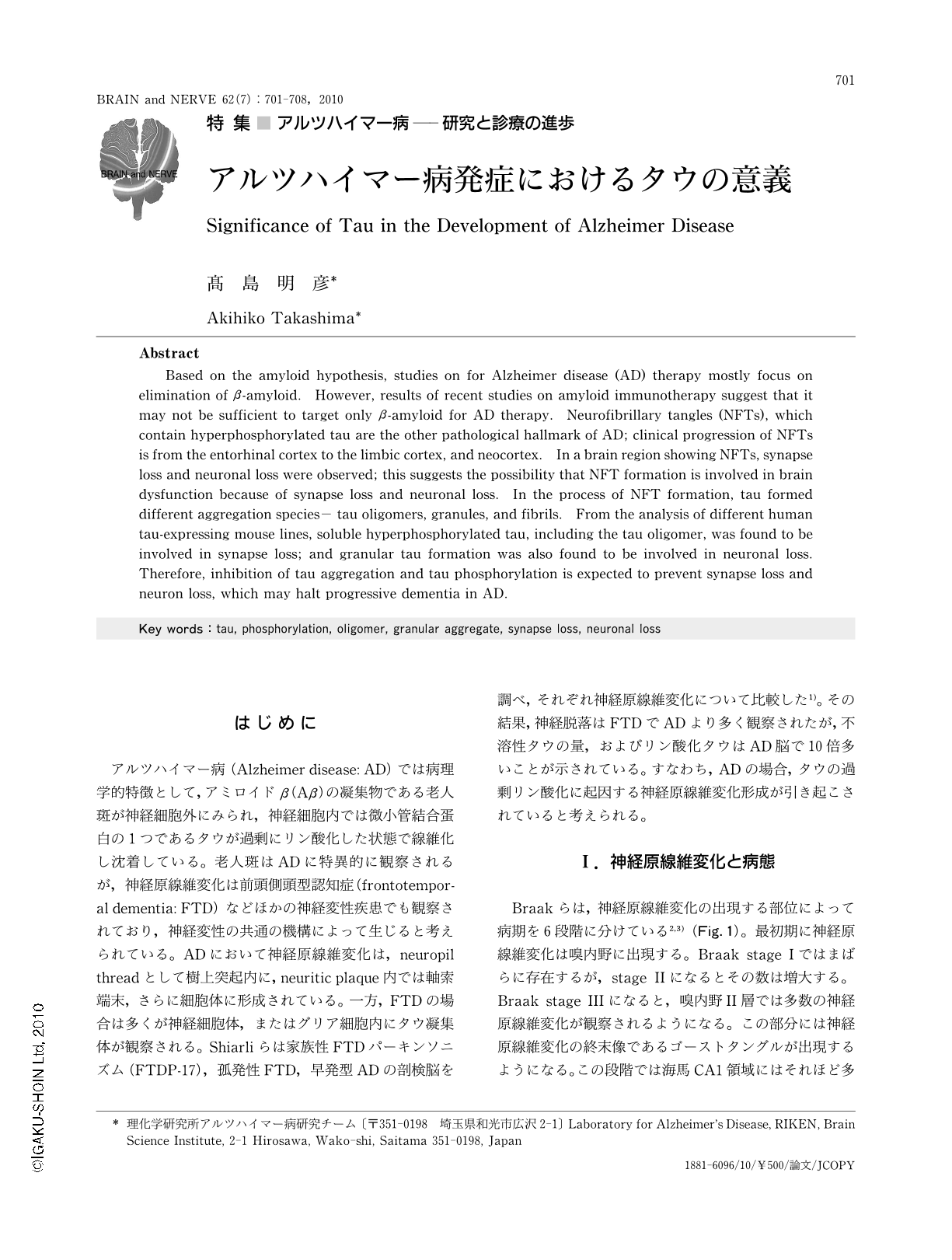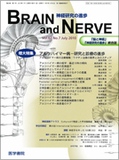Japanese
English
- 有料閲覧
- Abstract 文献概要
- 1ページ目 Look Inside
- 参考文献 Reference
はじめに
アルツハイマー病(Alzheimer disease: AD)では病理学的特徴として,アミロイドβ(Aβ)の凝集物である老人斑が神経細胞外にみられ,神経細胞内では微小管結合蛋白の1つであるタウが過剰にリン酸化した状態で線維化し沈着している。老人斑はADに特異的に観察されるが,神経原線維変化は前頭側頭型認知症(frontotemporal dementia: FTD)などほかの神経変性疾患でも観察されており,神経変性の共通の機構によって生じると考えられている。ADにおいて神経原線維変化は,neuropil threadとして樹上突起内に,neuritic plaque内では軸索端末,さらに細胞体に形成されている。一方,FTDの場合は多くが神経細胞体,またはグリア細胞内にタウ凝集体が観察される。Shiarliらは家族性FTDパーキンソニズム(FTDP-17),孤発性FTD,早発型ADの剖検脳を調べ,それぞれ神経原線維変化について比較した1)。その結果,神経脱落はFTDでADより多く観察されたが,不溶性タウの量,およびリン酸化タウはAD脳で10倍多いことが示されている。すなわち,ADの場合,タウの過剰リン酸化に起因する神経原線維変化形成が引き起こされていると考えられる。
Abstract
Based on the amyloid hypothesis,studies on for Alzheimer disease (AD) therapy mostly focus on elimination of β-amyloid. However,results of recent studies on amyloid immunotherapy suggest that it may not be sufficient to target only β-amyloid for AD therapy. Neurofibrillary tangles (NFTs),which contain hyperphosphorylated tau are the other pathological hallmark of AD; clinical progression of NFTs is from the entorhinal cortex to the limbic cortex,and neocortex. In a brain region showing NFTs,synapse loss and neuronal loss were observed; this suggests the possibility that NFT formation is involved in brain dysfunction because of synapse loss and neuronal loss. In the process of NFT formation,tau formed different aggregation species- tau oligomers,granules,and fibrils. From the analysis of different human tau-expressing mouse lines,soluble hyperphosphorylated tau,including the tau oligomer,was found to be involved in synapse loss; and granular tau formation was also found to be involved in neuronal loss. Therefore,inhibition of tau aggregation and tau phosphorylation is expected to prevent synapse loss and neuron loss,which may halt progressive dementia in AD.

Copyright © 2010, Igaku-Shoin Ltd. All rights reserved.


